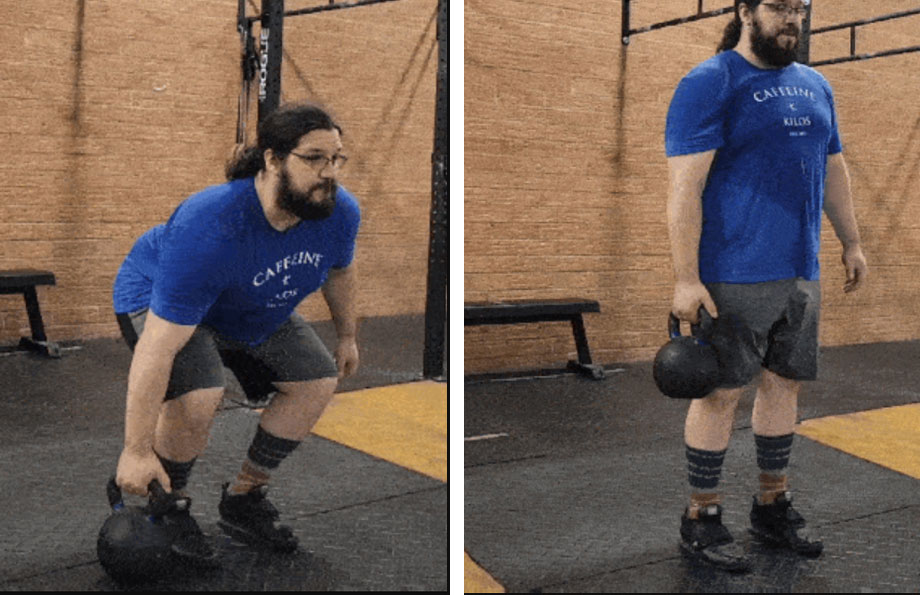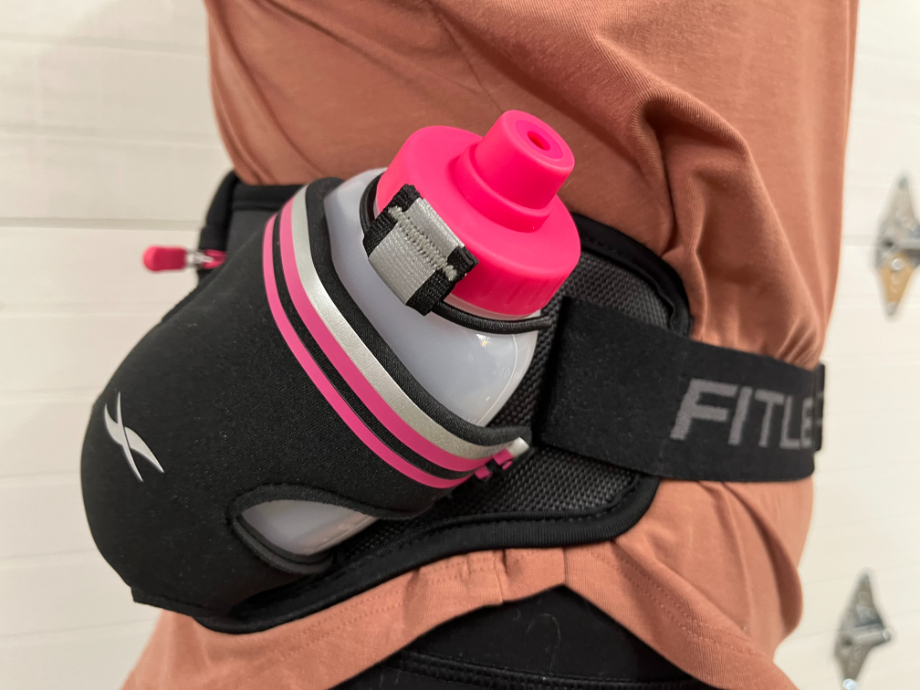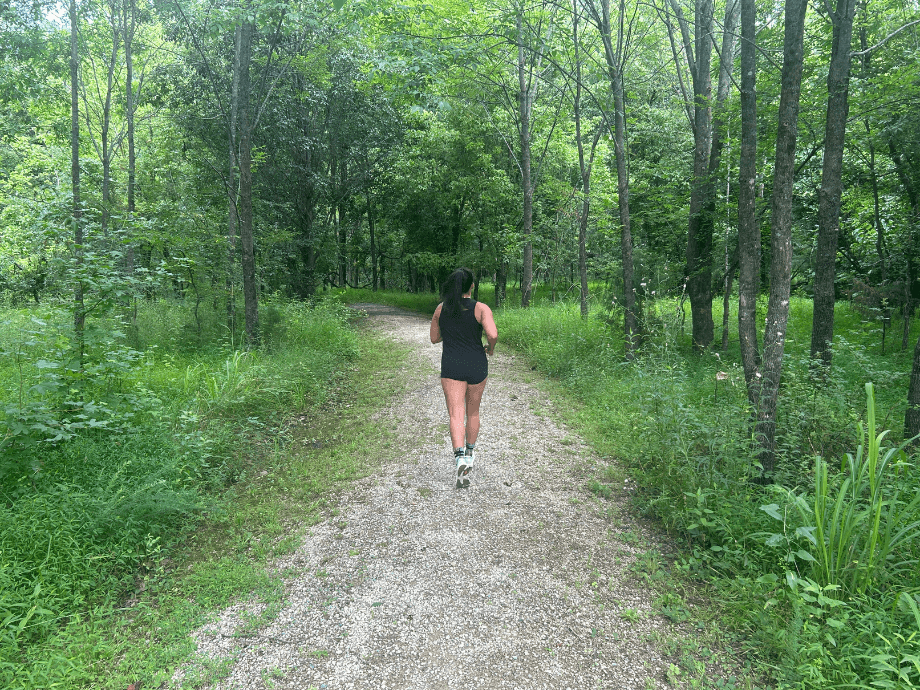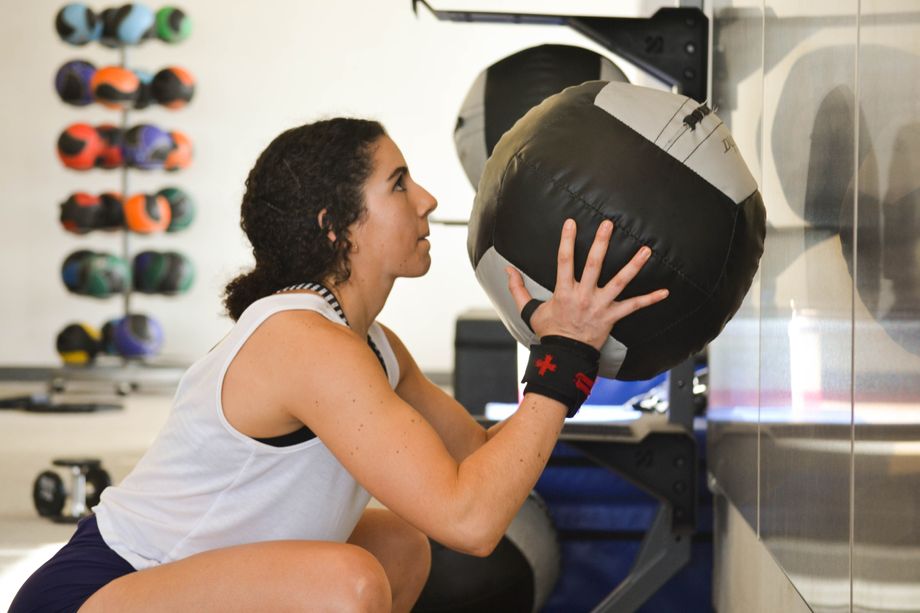Dearest deadlift: we love you, but sometimes we feel like switching it up. The suitcase deadlift is a simple deadlift variation involving a single dumbbell or kettlebell—unless we’re talking about the double suitcase deadlift—instead of a barbell. It’s not as widely used, but it can be effective.
Caine Wilkes, OLY, USAW-L1, and GGR senior staff writer, shares step-by-step instructions for the suitcase deadlift, provides top tips for perfect form, common mistakes to avoid, benefits, and more. Check it out below!
How to Do the Suitcase Deadlift
- Choose a free weight and place it on the floor next to your foot.
- From a standing position, push your hips back, bring your torso forward, bend your knees, and grip the weight with a neutral grip.
- Drive through your heels, extend your knees, and bring your hips forward to stand up while holding the weight at your side like a suitcase.
- Squeeze your glutes, then slowly return the weight to the starting position.
- Repeat as needed, then switch sides and repeat the set.
Muscles worked: Hamstrings, glutes, quadriceps, latissimus dorsi, spinal erectors, core
RELATED: Deadlift: Muscles Worked
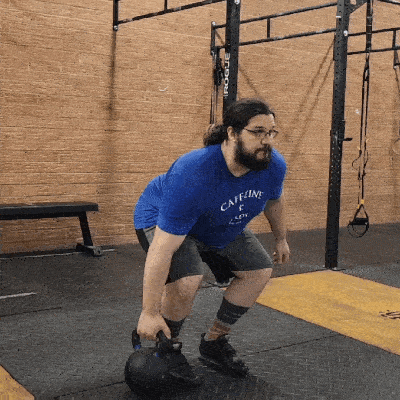
Trainer Tips on Form
The movement mechanics of the suitcase deadlift are similar to picking up a suitcase (thus the name) or other heavy item, but not identical. Here are a few tips to get it right.
Maintain Neutral Alignment
As the experts say, “Lift with your legs, not with your back.”
It’s a saying for good reason. If you round your back to pick up weight, your back muscles bear the brunt of the workload, and while that’s not inherently a bad thing, a rounded posture is far from ideal in terms of loading. (Unless you’re doing the Jefferson curl, but that’s another story.)
“Rounded and arched back positions both increase the amount of shear force placed on the spine, which could lead to an injury,” says Caine Wilkes, OLY, USAW-L1. “To reduce your risk of injury, it’s important to maintain neutral alignment.”
So, what does that look like?
- Your back should be straight
- Your core should be tight
- Your shoulders should be down and back
- Your neck should be relaxed
- Your eyes should be tracking forward
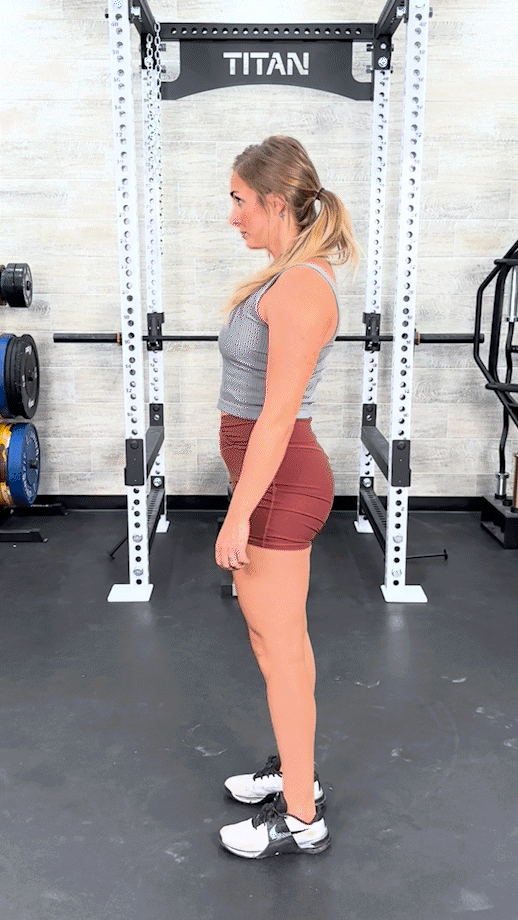
Maintain this posture for the entire range of motion on every rep during every set. The movement should come from the hip hinge, knee flexion, and knee extension. That’s it.
RELATED: Back Muscles Anatomy
Focus On Your Hip Hinge
The hip hinge movement is the cornerstone of the suitcase deadlift.
You’re not necessarily bending down to grip the weight but hinging at your hips and bending your knees to lower yourself, shorten your hamstrings, and prime your body to explode from the bottom into a full hip extension as you move through each rep.
RELATED: Hip Hinge Exercises
“The knee movement is entirely secondary,” says Caine. “The real main attraction for the suitcase deadlift is the hip hinge, which lets us produce enough power to move heavy weights with good form.”
Get your hips back, maintain neutral neck and spine alignment, grip the weight, and then thrust your hips forward as you extend your knees to get the weight off the floor and into the peak position without overly relying on your arms.
Control the Descent
It doesn’t matter if you’re doing the suitcase deadlift, regular deadlift, or any deadlift variation; controlling the concentric phase is crucial to maximizing gains. Slowly lowering the weights back to the floor extends your muscles’ time under tension, providing more activation and, as a result, more gains from each rep.
Plus, dropping free weights like dumbbells and kettlebells can be dangerous as they tend to bounce and could smack you in the shin or ankle. Don’t put yourself in that position; lower your weights with control on every rep!
Suitcase Deadlift Benefits
Working the suitcase deadlift into your regular strength training program should provide you with various gains since the exercise activates your entire body, but what other specific benefits should you expect?
RELATED: How to Increase Strength
May Help Improve Grip Strength
You’ll definitely appreciate spending the time doing suitcase deadlifts if you happen to be on a crowded subway, in line at the airport, or at the bus stop with a suitcase or briefcase clutched at your side.

Suitcase deadlifts target various muscles, including the brachioradialis in the forearm, which is responsible for grip strength and endurance. By regularly performing suitcase deadlifts, your forearms will be primed and ready to manage the workload.
May Provide Lower Back Pain Relief
Low back pain remains the leading cause of global disability, affecting hundreds of millions of people worldwide. According to the Journal of Sport Rehabilitation1, “exercise programs that include deadlifts are a clinically effective option for the treatment of low back pain,” as they strengthen lower body and core muscles to alleviate symptoms.
RELATED: Thoracic Mobility Exercises
May Help Correct Muscle Imbalances
Working one side of your body at a time allows you to identify bilateral strength deficits and muscle imbalances and correct them.
“When we perform bilateral movements and lifts, we tend to compensate for these imbalances by letting our dominant side pick up the slack. We don’t always know that we’re doing this, but it’s very common,” says Caine. “Lifting with one side at a time eliminates your ability to ‘cheat’ by forcing the side you’re targeting to do all the work.”
According to Biology of Sport2, unilateral training using exercises like the suitcase deadlift is also good for developing unilateral strength in general, so the next time you need to move something heavy on only one side of your body, you’ll be better equipped.
RELATED: Unilateral Exercises
Common Suitcase Deadlift Mistakes
Practice makes perfect: unless you’re practicing mistakes, that is. Here are some common mistakes to avoid while learning the suitcase deadlift.
Going Too Heavy
Struggling to perform a single rep is never a good sign. Your first few reps should get you used to the movement, not torch your form. Plus, overdoing it—assuming you actually get through the set in the first place—may leave you exhausted, leading to excessive rest periods that take away precious time you could and should be using to train.
“Choose a weight that is challenging but manageable,” recommends Caine. “If you’re doing a set of 10 reps, for example, you shouldn’t be exhausted on the sixth rep. It’s fine if you’re crying on the eighth or ninth rep, but gassing out early’s a clear sign that you went too heavy.”
Not Focusing Weight On Your Heels
For the suitcase deadlift, you want your weight on your heels throughout the whole range of motion. Keeping your weight on your toes or the balls of your feet reduces the power you can produce, leaving you off balance or at risk for injury.
“Sometimes it’s hard to keep the weight on your heels when you’ve gone too heavy,” says Caine, “but, sometimes, it’s an indication of mobility issues in the hips, knees, or ankles.”
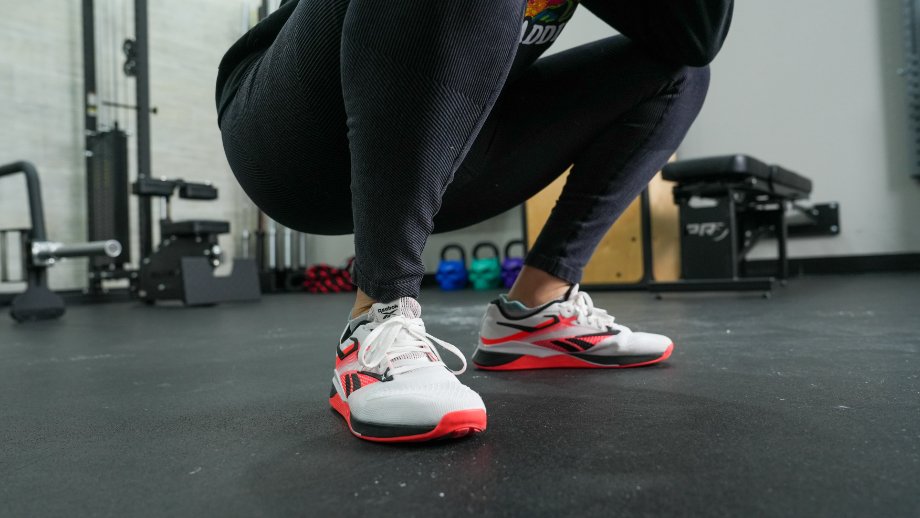
Working a few mobility exercises into your warm-up may help alleviate some of these issues, as does slapping on a pair of the best weightlifting shoes; but, if you’re having trouble keeping the weight on your heels where it should be, make sure you lift light weights until you get your form dialed in.
Who Should Do the Suitcase Deadlift?
We here at Garage Gym Reviews are “exercise inclusive,” meaning we can find a reason for just about everybody to incorporate an exercise into their routine. That said, the suitcase deadlift is a more intuitive addition for some individuals than others.
Strength athletes, including powerlifters, strongman athletes, and Olympic weightlifters like our very own Caine Wilkes, benefit from the improved strength, size, and endurance that suitcase deadlifts can provide. Plus, the suitcase deadlift involves unilateral loading, which helps correct muscle imbalances, develop anti-rotational strength, and enhance overall athletic abilities.
Regular gym-goers can benefit from doing suitcase deadlifts, too. As with the regular deadlift, the suitcase deadlift activates core muscles to build core strength and stability, thus reducing your risk of injury from sports or everyday living activities. More grip strength is beneficial for everyday tasks like carrying groceries, releasing a super stuck jar lid, keeping an iron grip on your revved-up puppy’s leash, and more.
RELATED: Functional Core Exercises
That’s not all; according to Clinical Rehabilitation3, core stability exercises may improve “trunk control, dynamic sitting balance, standing balance, gait, and activities of daily living in subacute post-stroke patients.”
So, for subacute post-stroke patients and other individuals with medical conditions that affect balance and gait, core stabilization exercises like the suitcase deadlift, when combined with conventional therapy, can be beneficial. However, it’s prudent to consult your doctor or other qualified healthcare professional before beginning a new exercise regimen, so do that first!
Suitcase Deadlift Alternatives
The suitcase deadlift and suitcase deadlift variations are amazing when programmed properly into a well-rounded strength training regimen, but sometimes you need a similar exercise that changes the stimulus just enough.
If that’s the case, these suitcase deadlift alternatives may be just as suitable.
Trap-Bar Deadlift
Why do it: “The trap bar uses a nearly identical movement pattern to the suitcase deadlift, but the trap bar is an inherently more stable piece of equipment that puts less stress on the lumbar spine,” says Caine Wilkes, OLY, USAW-L1. “Plus, it lets you lift heavier, which is key for strength gains.”
How to do it:
- Set a trap bar on the floor, load it to the desired weight, and step inside.
- Push your hips back, bend your knees, and reach down to grip the trap bar handles.
- Drive through your heels, extend your knees, and bring your hips forward to stand tall.
- Squeeze your glutes at the top.
- Slowly return to the starting position.
- Repeat as needed.
RELATED: Trap-Bar Deadlift
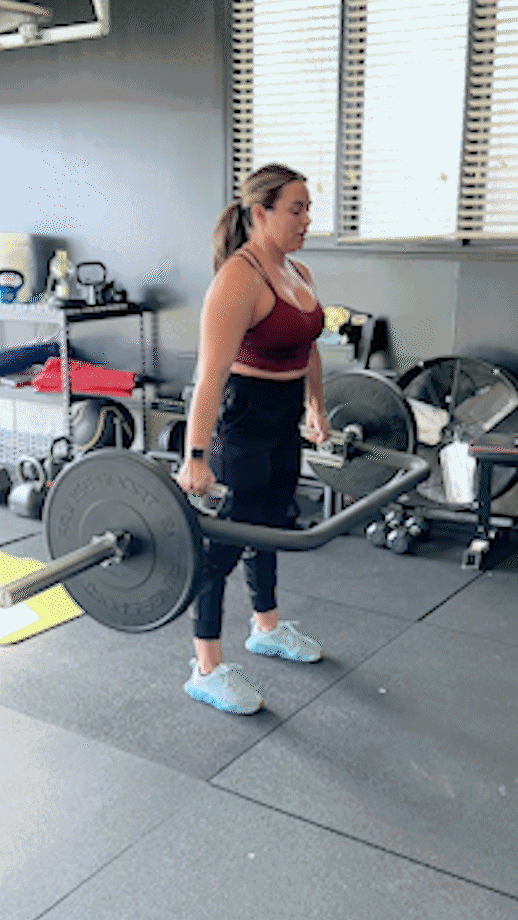
Deficit Conventional Deadlift
Why do it: The greater the range of motion and the time under tension, the more impactful each rep is. That’s the idea behind the deficit deadlift. The greater distance between the peak position and the floor also requires more knee and hip flexion.
How to do it:
- Place a barbell on the floor and step onto a block, bumper plate, or step-up platform.
- Stand with your feet shoulder-width apart, chest tall, core tight, and eyes forward.
- Push your hips back, bend your knees, and reach down to grip the bar with a double overhand or mixed grip.
- Drive through your heels, extend your knees, and bring your hips forward to stand tall.
- Squeeze your glutes at the top of the movement.
- Slowly return the bar to the floor by reversing the movement.
- Repeat as needed.
RELATED: Best Bumper Plates
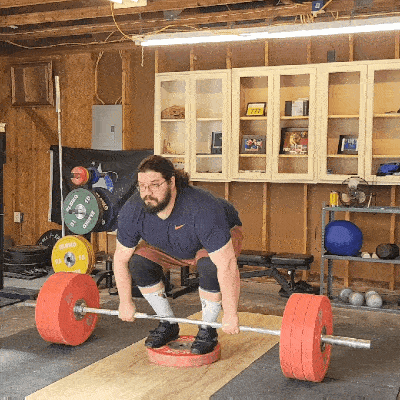
Suitcase Carry
Why do it: The suitcase carry is essentially a one-handed farmer’s walk, which is a great exercise for targeting the primary muscle groups throughout your entire body, building core stability, and enhancing cardio capacity.
How to do it:
- Set up as you would for the standard suitcase deadlift exercise.
- Perform a single or double suitcase deadlift and remain in the top position.
- Slowly start walking in a straight line, keeping your core braced.
- Continue for the desired distance or duration, then set the weight down.
- Switch sides and repeat.
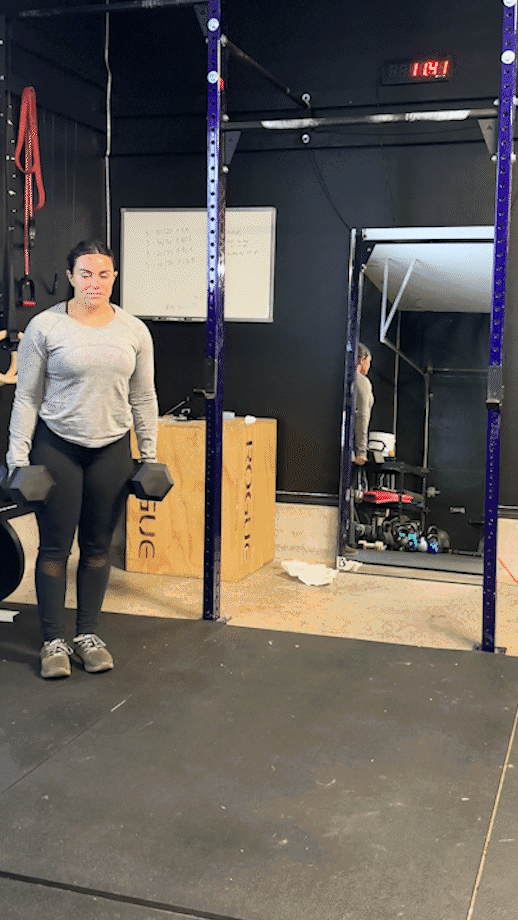
How to Program the Suitcase Deadlift
Beginners and seasoned lifters might be wondering how to include the suitcase deadlift into their routines to reach their fitness goals. The best way to program the suitcase deadlift into your routine will depend on what you’re using it for.
“For strength gain, you want to do fewer sets, fewer repetitions, heavier weights, and plenty of rest so you can give it 100% on each round,” says Caine Wilkes, OLY, USAW-L1. “Three to five sets of 3 to 5 reps works well, but you have to go heavy. Like ‘challenging on every rep’ heavy.”
On the other hand, if you’d prefer to build those deadlift muscles and prioritize hypertrophy workouts, moderate weights with a moderate rep scheme work best. Shoot for 3 to 6 sets of 6 to 12 reps using weights that pose a challenge.
Don’t count out the value of a certified personal trainer or strength coach if you’re looking for personalized recommendations. They can take your existing routine, factor in your goals, and put together something that’ll help you get where you want to go faster.
RELATED: How Many Reps To Build Muscle
Suitcase Deadlift: FAQs
What’s the difference between a barbell deadlift and suitcase deadlift?
The barbell deadlift involves lifting a heavy barbell from the floor by extending the knees and hips.
The suitcase deadlift is a nearly identical movement pattern, but instead of a barbell, you’re using a dumbbell or kettlebell held at your side like a suitcase, thus the name.
Do suitcase deadlifts work obliques?
“Most people assume you need side-to-side movement to work the obliques, but the suitcase deadlift defies that assumption by being one of the best functional lifts for hitting the obliques,” says Caine Wilkes, OLY, USAW-L1, and GGR senior staff writer. “Since you’re being weighed down on one side, you need your core muscles, namely the obliques, to resist rotation and maintain a rigid posture. So, you’re most definitely hitting those obliques.”
RELATED: Oblique Workouts
Does the suitcase deadlift build muscle?
It sure can, provided you’re programming it to prioritize hypertrophy, eating right, getting enough rest, drinking plenty of water, and maybe taking a few supplements for muscle growth.
What’s the hardest deadlift position?
The hardest deadlift position, variation, or alternative depends on your strengths and weaknesses. Some find suitcase deadlifts easier than the conventional deadlift; some find them harder. Some people like deadlift variations like the sumo deadlift and Romanian deadlift, or RDL for those in the know, while some prefer the tried-and-true traditional version.
Don’t be afraid to try different variations to see what works best for you. All deadlift variations can be effective if utilized properly, so don’t feel required to pick the “hardest” one to get results. You can still get results by progressing gradually on the lifts you’re already strong at and occasionally sprinkling in a few other variations.
References
1. Fischer SC, Calley DQ, Hollman JH. Effect of an Exercise Program That Includes Deadlifts on Low Back Pain. J Sport Rehabil. 2021;30(4):672-675. Published 2021 Feb 24. doi:10.1123/jsr.2020-0324
2. Liao KF, Nassis GP, Bishop C, Yang W, Bian C, Li YM. Effects of unilateral vs. bilateral resistance training interventions on measures of strength, jump, linear and change of direction speed: a systematic review and meta-analysis. Biol Sport. 2022;39(3):485-497. doi:10.5114/biolsport.2022.107024
3. Cabanas-Valdés R, Bagur-Calafat C, Girabent-Farrés M, Caballero-Gómez FM, Hernández-Valiño M, Urrútia Cuchí G. The effect of additional core stability exercises on improving dynamic sitting balance and trunk control for subacute stroke patients: a randomized controlled trial. Clin Rehabil. 2016;30(10):1024-1033. doi:10.1177/0269215515609414


